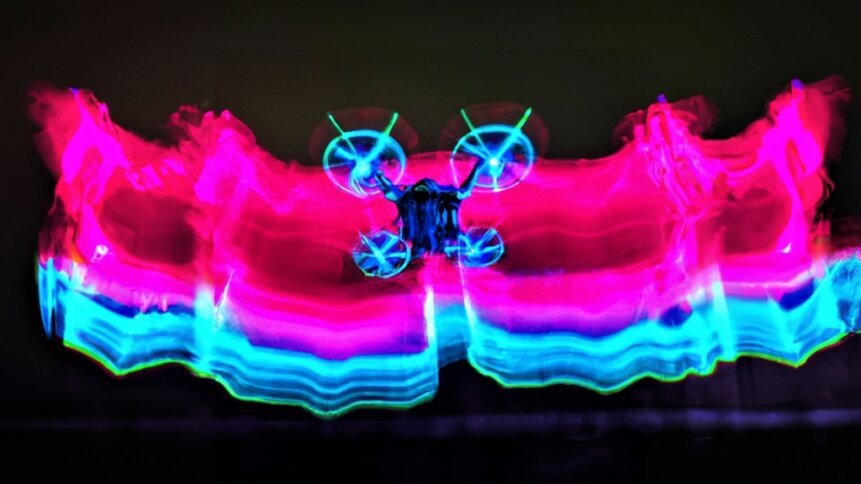Mobile networks at altitude accelerate industrial drone tech

|
Getting your Trinity Audio player ready...
|
• 1900 km trial in UK generates valuable BVLOS flight data
• Carbon emissions study highlights environmental benefits
• Success of industrial drone tech depends on understanding customer needs
In principle, the idea of a sky buzzing with drones ferrying supplies back and forth, as well as delivering a wide range of other cutting-edge services, is a highly compelling one. Industrial drone tech is widely seen as an enabler across multiple sectors, predictably expanding on courier operations, but also bringing innovation to health care, agriculture, search and rescue, humanitarian aid distribution, and digital imaging.
With so many ideas on the table, the issue isn’t a lack of imagination. The roadblocks are of a more practical nature, and one of the biggest is how to safely open up the skies. Undeterred by the scale of the challenge, Tom Guy – Managing Director of Etc., BT Group’s incubation arm – and his team are on a mission to get industrial drone tech into the hands of customers so that users can start solving the problems that are important to them.
Understanding where drones can make a difference
In the invite-only press briefing, Guy makes clear that he’s not a believer in innovation for innovation’s sake. Applications need to provide value and fix real pain points. And his team spends time with clients day to day to understand their working practices and identify where drones, and other solutions that leverage BT’s networking assets, can make a difference.
Etc., which sits within BT Group’s Digital unit, builds on assets from the corporate model. And to move fast, the incubator arm brings ‘start-up’ thinking to its operations in order to speed up the process of testing ideas in the market. “It’s not just about buying a bean bag and reading a book,” comments Guy, reminding the audience that products will only be long-lasting if they address genuine issues.
The applications currently being explored by Etc. fall broadly into three areas – fintech, health tech, and drones. And the group is using partnerships to further accelerate the development process. “We don’t have to build everything ourselves,” said Guy.
One of the headline projects in the industrial drone technology space is Project Skyway – an ambitious plan, led by BT partner Altitude Angel, to create the largest and longest network of drone superhighways in the world – which is backed by the UK government’s Future Flight Challenge.
Expanding on the initial scope and recognizing the importance of laying foundations for the long term, BT announced a GPB 5 million investment in Altitude Angel in January 2023. The financial backing opens the door to extending the Skyway corridor beyond the planned 165-miles, to thousands of miles of Skyway infrastructure connecting towns and cities as well as transport and package delivery hubs, across the UK.
Medical logistics corridor
Adding to the detail, BT Group announced in April 2023 that it was using its network to explore the prospects for healthcare and medical deliveries in a drone trial connecting two Midlands hospitals, University Hospitals Coventry and Warwickshire NHS Trust sites in Coventry and Rugby, UK.
The success of the drone flights, delivering medical supplies, represents a significant milestone for the team as it was the UK’s first over-land Beyond Visual Line of Sight (BVLOS) trial. A collaboration with drone partner Skyfarer, the group completed more than 30 hours’ worth of BVLOS flights during the trial, without any faults or failures to report.
The smooth running of the operation is noteworthy given the complex airspace and proximity to urban areas. In total, drones were flown more than 1900 km, traveling 220 km in a single day – enabled by BT connectivity that has been optimized for use at altitude.
Point-to-point deliveries could make all the difference in sectors such as healthcare and there are environmental advantages too. “Transport time is significantly shorter, which is vital for perishable goods,” said Dave Pankhurst – Director of Drones at BT Group. “We see huge benefits in carbon emissions reduction.”
A carbon emission-saving study (carried out as part of the medical logistics exercise by Skyfayer) identified a 99.98% reduction in CO2 emissions when using an unpiloted aerial vehicle compared with making deliveries using a diesel van. And there were still gains even if the ground transport was also electrified, highlighting the point-to-point benefits of industrial drone technology.
Complex puzzle
Practical demonstrations such as the medical delivery trial are essential in helping stakeholders identify the optimum path to deconflicting the sky so that airspace can be shared safely. It’s a complex puzzle, but a blend of ground sensors and airborne connectivity, taking data feeds from different sources, paves the way for monitoring and controlling industrial drone activity.
Mobile SIMs designed specifically for drone use add a heartbeat to industrial technology. But it’s also about getting the processes and people on the same page too – proving connectivity services to operators as well as learning about customer needs. And, as mentioned, there’s no shortage of ideas on future applications.









